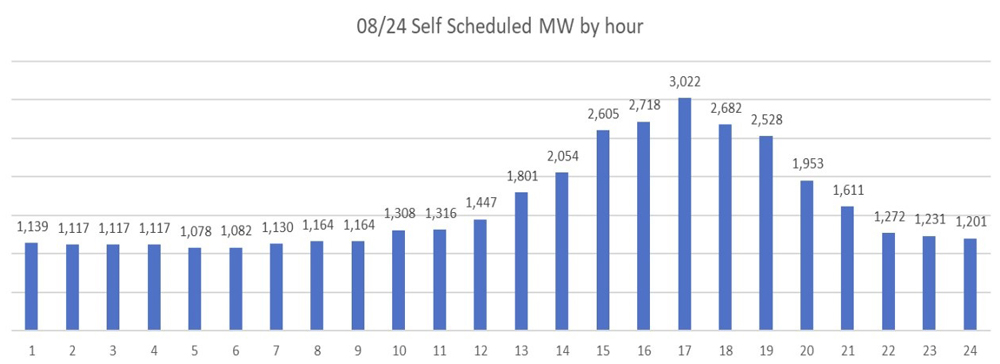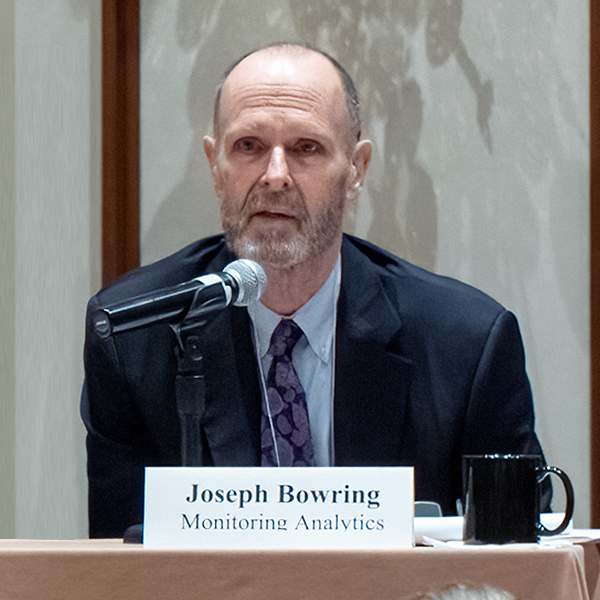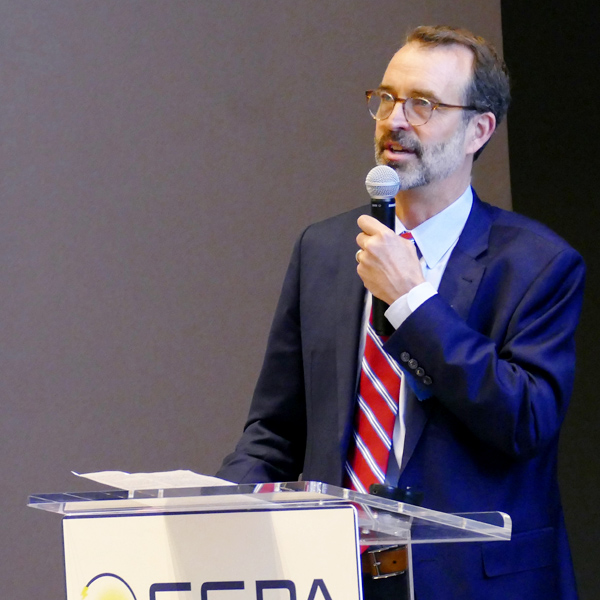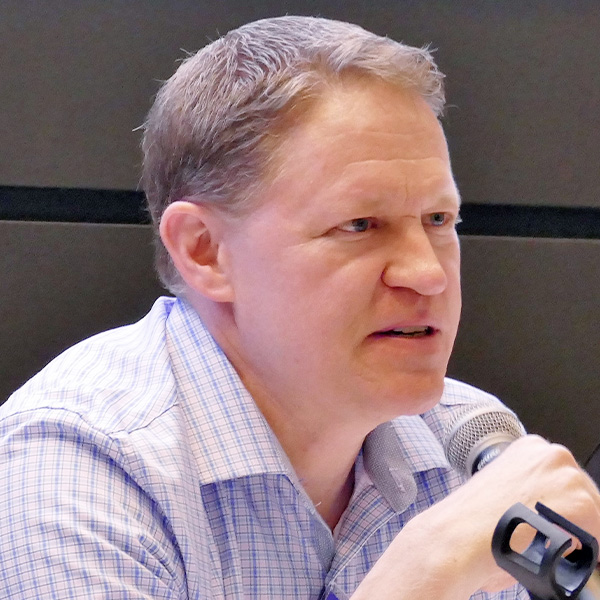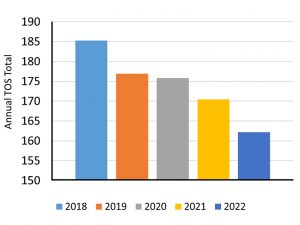Generators Cite Reasons for Low Synch Reserve Response Rate
VALLEY FORGE, Pa. — PJM presented feedback it received from synchronized reserve resources that have come up short in their response to reserve deployments since October 2022, when PJM implemented a market overhaul that was followed by a drop in reserve response rates. (See Synchronized Reserve Pricing Falls in PJM Markets After Overhaul.)
Resources responding to outreach from PJM and the Independent Market Monitor attributed portions of their shortfall to delayed, insufficient or incorrect action at their market operation centers. Factors included missing an all-call signal; not understanding how to respond to a spin event; and incorrect parameters, such as ramp rate, being reported in Markets Gateway.
Some generation owners said they had been operating under the Intelligent Reserve Deployment (IRD) rules that PJM had proposed, but which ultimately were rejected by FERC in August 2022. The IRD proposal would have included a level of reserves being requested from generators; however, the status quo requires that resources provide their full reserve obligation unless directed to do otherwise.
PJM sought to address the diminished response rate by increasing the synchronized reserve requirement by 30% in May, overriding a Markets and Reliability Committee (MRC) vote that rejected the increase. It also proposed to create the Reserve Certainty Senior Task Force to discuss changes to several components of the reserve market and how it operates. The task force has its first meeting on Oct. 10. (See “PJM Issue Charge on Reserve Certainty Approved,” PJM MRC/MC Briefs: Sept. 20, 2023.)
The RTO has published an FAQ and guidance for synchronized reserve resources to improve resource owners’ understanding of how the market functions and their obligations during a spin event.
PJM’s Melissa Pilong told the OC that close to 100 resources responded to the outreach, accounting for approximately 75% of the shortfall by megawatts over the past year. She said PJM’s goal is to find solutions that can allow the reliability requirement to be reduced back to 100% of the single largest contingency.
Stakeholders Endorse Outage Coordination Manual Revisions
The OC endorsed conforming revisions to Manual 38 to codify the outage coordination package the committee approved in June. (See PJM OC Briefs: June 8, 2023.)
The package adds coordination between utilities and PJM to identify potential extended outages, evaluate their impact and expand the outage information released by the RTO. The manual language will be considered by the MRC during its Oct. 25 meeting.
A competing proposal from the Monitor, which received 17% support in June, sought to increase transparency about late outages and impacts on transmission congestion.
PJM Proposes Quick Fix for Transmission Cut-in Process
PJM presented a quick fix proposal to allow the RTO to delay the end time of a cut-in ticket by one day if information regarding one of the “critical cut-in tasks” has not been supplied and extending the outage is not expected to pose reliability concerns. PJM will coordinate with the transmission owner to obtain the missing information prior to the line being energized.
The quick fix process allowed PJM to bring a problem statement and issue charge concurrently with a proposed solution. The OC is set to vote on the proposal Nov. 2, followed by the MRC on Nov. 15. If approved, the change would be effective upon MRC endorsement.
PJM’s Dean Manno told the OC that a one-day delay is being sought as review of the information can be done in that time once it’s received.
PJM Presents Recommended Winter Weekly Reserve Target Values
PJM’s Patricio Rocha-Garrido presented the recommended winter weekly reserve targets (WWRT) values for the 2023/24 winter, which call for a higher level of reserves for each month compared with last winter. The WWRT is used to inform the scheduling of planned outages during the winter to minimize the potential for maintenance to cause a higher loss of load expectation.
The recommended maximum monthly available reserves figure is 28% for December, 30% for January and 25% for February. The values for last winter were 21% for December, 27% for January and 23% for February.
Garrido said this year’s analysis included a higher forced outage rate in the historical data owing to inclusion of extreme weather during the 2014 polar vortex and the December 2022 winter storm. PJM historically had not included the polar vortex data in its analysis, but reversed that based on its experience during Winter Storm Elliott.
The WWRT is one of the three values produced through the annual Reserve Requirement Study. The Planning Committee voted on Tuesday to endorse PJM’s recommended installed reserve margin (IRM) and forecast pool requirement figures, both of which would increase the reserves PJM aims to procure for the 2027/28 delivery year. (See “First Read of 2023 RRS Values,” PJM MRC/MC Briefs: Sept. 20, 2023.)
Quick Fix for Public Conservation Request Guidelines Proposed
PJM proposed changes to its public notifications seeking reductions in electric consumption during emergency conditions to specify that the request is being made of all consumers, not just residential load, and to aim to better integrate the notification process into other emergency procedures. Additional ways that consumers can conserve energy also are included in the proposed language.
The proposed manual revisions also detail PJM’s reporting requirements to the Department of Energy, NERC and RF or SERC when a conservation request is made.
The revisions will be considered by the OC and MRC during their November meetings.
Periodic Review Revisions to Several Manuals Discussed
-
- Stakeholders endorsed revisions to Manual 3A intended to clarify PJM’s quarterly data collection process for identifying outages that don’t yet have a network model ticket. The language also aims to clarify definitions of monitored priorities.
- Revisions to Manual 3 seek to add detail around the documentation of stability limits and would add references to generation interconnection agreements when discussing interconnection service agreements.
- The periodic review of Manual 10 led to recommended revisions clarifying that, when reporting outages in eDART, non-capacity resources should report their full nameplate capability unless physically derated.
- PJM proposed revisions to Manual 14D requiring that all generation resources prepare for cold weather operations and expanded the guidance it provides for its cold weather checklist. The recommendations for combustion turbine operators encourage proactive action to avoid unexpected icing that could occur due to proximity to sources of warm, moist air such as rivers or cooling tower plumes. The proposal also includes recommendations for ensuring de-icing capabilities are prepared for wind turbines, liquid-cooled inverters have anti-freezing capabilities and designating a “freeze protection operator” to plan preventative measures for critical equipment.
